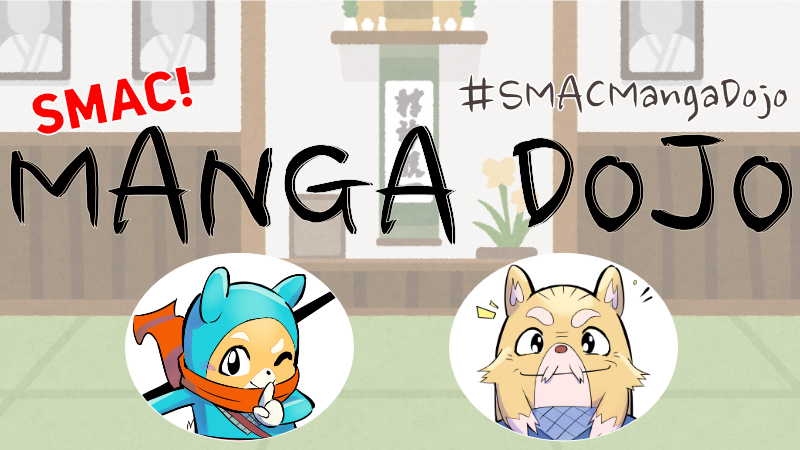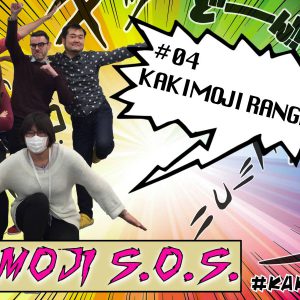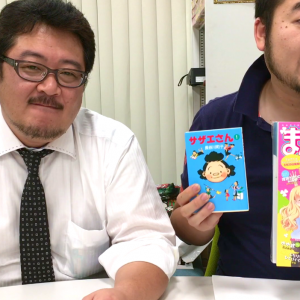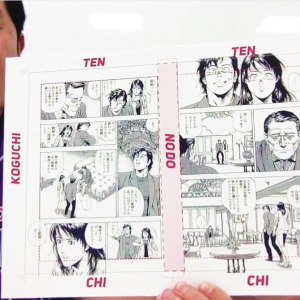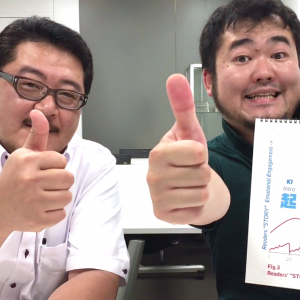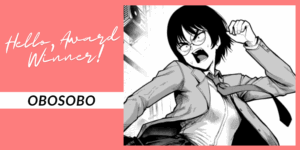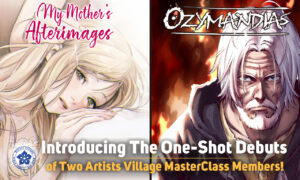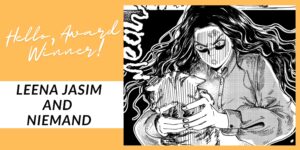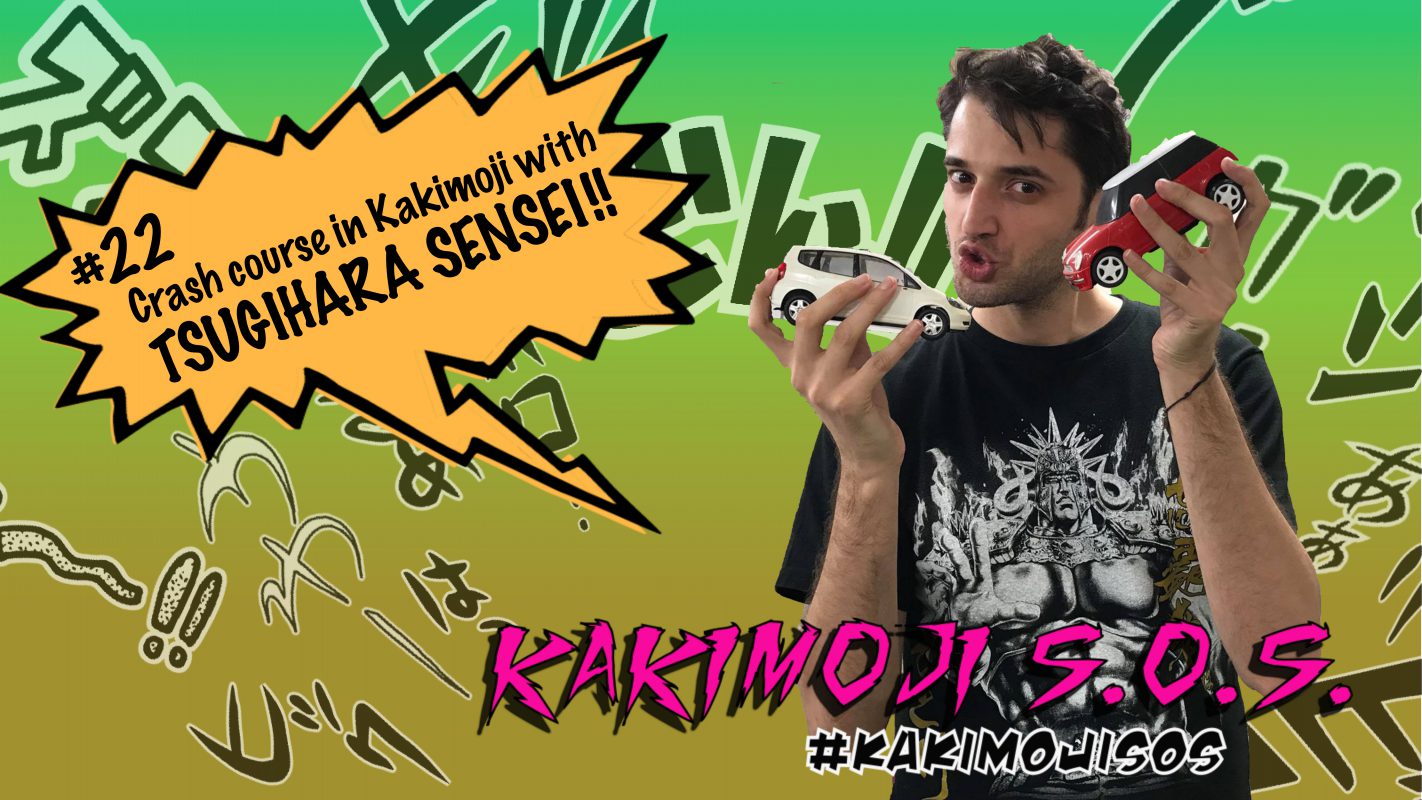
Kakimoji fans, CIAO!
Today we’ll take a look at the Kakimoji that appears in the works of our SILENT MANGA AUDITION® judges, Ryuji Tsugihara sensei!!
I’ve already mentioned his most famous manga, Yoroshiku Mecha-doc several times in Kakimoji S.O.S., but this time we’ll be analyzing Tsugihara sensei’s other hit…
 Restore Garage 251 is THE manga for petrol-heads. It tells the story of mechanic Satomi Yumejiro and his daily adventures in restoring any and every car imaginable. A thought provoking drama with the restoration of the human characters as important as the cars they fix.
Manga can cover just about every taste imaginable. From action stories to drama, big battles to romantic dances, you can bet there’s a manga, and supporting Kakimoji that depicts it.
As Jonathan Tarbox mentioned in last week’s interview, Kakimoji are not merely sound effects. They are also used to convey feelings, atmosphere, and most importantly, nuances that do not appear in the dialogue. In other words, vital tools to establish dramatic scenes!
Restore Garage 251 is THE manga for petrol-heads. It tells the story of mechanic Satomi Yumejiro and his daily adventures in restoring any and every car imaginable. A thought provoking drama with the restoration of the human characters as important as the cars they fix.
Manga can cover just about every taste imaginable. From action stories to drama, big battles to romantic dances, you can bet there’s a manga, and supporting Kakimoji that depicts it.
As Jonathan Tarbox mentioned in last week’s interview, Kakimoji are not merely sound effects. They are also used to convey feelings, atmosphere, and most importantly, nuances that do not appear in the dialogue. In other words, vital tools to establish dramatic scenes!
 I always thought that Kakimoji were made especially for battle manga, but maybe I was wrong!
Indeed PenMaru! Kakimoji are just as important, if not more when setting the atmosphere in quiet dramas than they are in earth shattering battles!
With quiet dramas in manga, we have situations that have no movement. Two people staring, a hand on a door handle, a character staring out of a window, moments life these are more akin to illustrations than a comic book. But manga is all about movement, in action, and it’s Kakimoji that enables the artist to successfully depict this action.
So, let’s see Kakimoji at work in Tsugihara sensei’s human drama!
I always thought that Kakimoji were made especially for battle manga, but maybe I was wrong!
Indeed PenMaru! Kakimoji are just as important, if not more when setting the atmosphere in quiet dramas than they are in earth shattering battles!
With quiet dramas in manga, we have situations that have no movement. Two people staring, a hand on a door handle, a character staring out of a window, moments life these are more akin to illustrations than a comic book. But manga is all about movement, in action, and it’s Kakimoji that enables the artist to successfully depict this action.
So, let’s see Kakimoji at work in Tsugihara sensei’s human drama!

 When the engine of the car is ignited, the engine sound begins to vibrate with a heavy, shaggy Kakimoji, “Broo Broo” (ブロォ ブロォッ). Here, the engine sound travels from one frame to the next, representing a link to the past with Kakimoji used as the ‘vehicle’.
The design of this Kakimoji is equally important. We can almost feel the vibrations, and with the clear black characters, we can get real sense of the mechanical aspects involved.
Let’s take a look at Kakimoji used in everyday scenes. The protagonist is a 60 year old man, charming and approachable so whenever I pick up this manga, I always feel drawn to this warm character.
When the engine of the car is ignited, the engine sound begins to vibrate with a heavy, shaggy Kakimoji, “Broo Broo” (ブロォ ブロォッ). Here, the engine sound travels from one frame to the next, representing a link to the past with Kakimoji used as the ‘vehicle’.
The design of this Kakimoji is equally important. We can almost feel the vibrations, and with the clear black characters, we can get real sense of the mechanical aspects involved.
Let’s take a look at Kakimoji used in everyday scenes. The protagonist is a 60 year old man, charming and approachable so whenever I pick up this manga, I always feel drawn to this warm character.



FOLLOW ME for more Kakimoji tips! Twitter Facebook …and remember to use the hashtag #kakimojisos 😉
 Restore Garage 251 is THE manga for petrol-heads. It tells the story of mechanic Satomi Yumejiro and his daily adventures in restoring any and every car imaginable. A thought provoking drama with the restoration of the human characters as important as the cars they fix.
Manga can cover just about every taste imaginable. From action stories to drama, big battles to romantic dances, you can bet there’s a manga, and supporting Kakimoji that depicts it.
As Jonathan Tarbox mentioned in last week’s interview, Kakimoji are not merely sound effects. They are also used to convey feelings, atmosphere, and most importantly, nuances that do not appear in the dialogue. In other words, vital tools to establish dramatic scenes!
Restore Garage 251 is THE manga for petrol-heads. It tells the story of mechanic Satomi Yumejiro and his daily adventures in restoring any and every car imaginable. A thought provoking drama with the restoration of the human characters as important as the cars they fix.
Manga can cover just about every taste imaginable. From action stories to drama, big battles to romantic dances, you can bet there’s a manga, and supporting Kakimoji that depicts it.
As Jonathan Tarbox mentioned in last week’s interview, Kakimoji are not merely sound effects. They are also used to convey feelings, atmosphere, and most importantly, nuances that do not appear in the dialogue. In other words, vital tools to establish dramatic scenes!
 I always thought that Kakimoji were made especially for battle manga, but maybe I was wrong!
Indeed PenMaru! Kakimoji are just as important, if not more when setting the atmosphere in quiet dramas than they are in earth shattering battles!
With quiet dramas in manga, we have situations that have no movement. Two people staring, a hand on a door handle, a character staring out of a window, moments life these are more akin to illustrations than a comic book. But manga is all about movement, in action, and it’s Kakimoji that enables the artist to successfully depict this action.
So, let’s see Kakimoji at work in Tsugihara sensei’s human drama!
I always thought that Kakimoji were made especially for battle manga, but maybe I was wrong!
Indeed PenMaru! Kakimoji are just as important, if not more when setting the atmosphere in quiet dramas than they are in earth shattering battles!
With quiet dramas in manga, we have situations that have no movement. Two people staring, a hand on a door handle, a character staring out of a window, moments life these are more akin to illustrations than a comic book. But manga is all about movement, in action, and it’s Kakimoji that enables the artist to successfully depict this action.
So, let’s see Kakimoji at work in Tsugihara sensei’s human drama!

和解の排気音 (The Exhaust sound of reconciliation)
From the very first episode, we “see” sound in the very title of the Manga! As we have learned in the past, we can also depict other elements through Kakimoji, such as vibration, smell and even silence, or in this case, the exhaust! When the engine of the car is ignited, the engine sound begins to vibrate with a heavy, shaggy Kakimoji, “Broo Broo” (ブロォ ブロォッ). Here, the engine sound travels from one frame to the next, representing a link to the past with Kakimoji used as the ‘vehicle’.
The design of this Kakimoji is equally important. We can almost feel the vibrations, and with the clear black characters, we can get real sense of the mechanical aspects involved.
Let’s take a look at Kakimoji used in everyday scenes. The protagonist is a 60 year old man, charming and approachable so whenever I pick up this manga, I always feel drawn to this warm character.
When the engine of the car is ignited, the engine sound begins to vibrate with a heavy, shaggy Kakimoji, “Broo Broo” (ブロォ ブロォッ). Here, the engine sound travels from one frame to the next, representing a link to the past with Kakimoji used as the ‘vehicle’.
The design of this Kakimoji is equally important. We can almost feel the vibrations, and with the clear black characters, we can get real sense of the mechanical aspects involved.
Let’s take a look at Kakimoji used in everyday scenes. The protagonist is a 60 year old man, charming and approachable so whenever I pick up this manga, I always feel drawn to this warm character.

Dokkin (ドッキン )
Can you see a particular aspect of the “Dokkin” Kakimoji? Not only do the protagonist’s eyes became heart shaped when confronted with a beautiful girl, the Kakimoji also establishes a comedic atmosphere to the scene. Rather than just eyes shapes alone to set the scene, the Kakimoji allows the artist to infuse the panel with much more emotion
Shanari… Shanari… (しゃなり.. しゃなり..)
In Japan there is an almost infinite variety of sound designs. “Shanari” is a walking movement, but it is a very feminine sound, used specifically for people in kimonos. The luxuriousness of a woman moving in a kimono is very unique!
がっく〜ん、チィーン、カタッ (Gakuun, Chiin, Kata)
Even in scenes that do not have much sound, it is very effective to simply place multiple types of Kakimoji for comical effect. The precise sound of the bell is completely different from other Kakimoji, with its thin, elongated design. Tsugihara sensei’s unique use of Kakimoji in his work has increased the power of his scenes exponentially! I explained about the abundance of onomatopoeia in Japanese in the middle of this article, but there are also a lot of new onomatopses born from manga’s Kakimoji. Manga kingdom, Japan’s unique culture! Much like Shakespeare himself, a creator is cable of creating new words which will, over time, fall into common use… just like the power of Kakimoji! For example, what word would could represent “How gentle women walk”? That’s your homework for this week! So, that’s all for today… CIAO!FOLLOW ME for more Kakimoji tips! Twitter Facebook …and remember to use the hashtag #kakimojisos 😉





